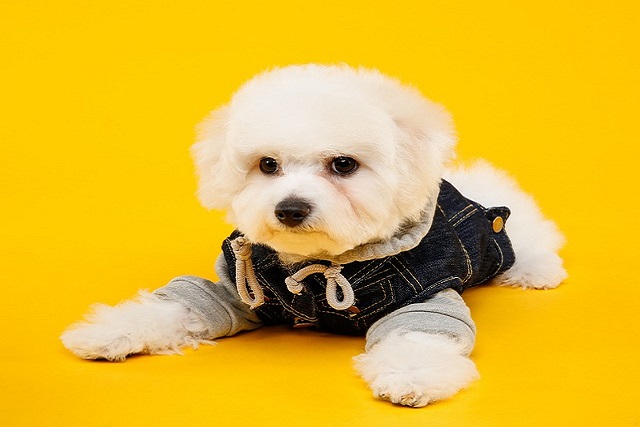
How can I tell if my dog's heatstroke is serious
Let’s be real: It’s a sticky August morning in Los Angeles, and you took your 2-year-old Golden Retriever, Max, for a walk a little later than usual
Imagine coming home to your Boston apartment after a quick errand to find your 1-year-old rescue mutt, Milo, has chewed through your favorite sneakers and left a puddle by the door—all while you were gone for just 20 minutes. His tail wags wildly, but his panting and trembling scream anxiety. You wonder: Will he grow out of this, or is this our new normal? A Chicago dog trainer once worked with a golden retriever who’d been labeled “hopeless” at 3 years old—only to show that with consistent care, even severe cases can improve. Let’s unpack whether dogs truly outgrow separation anxiety.
Separation anxiety isn’t a “phase” dogs mature out of like teething; it’s a behavioral condition rooted in their pack instincts. Dogs evolved to rely on group safety, so being alone can trigger panic responses—think of it like a child’s first day of school, but amplified by a predator-driven brain. Puppies taken from their litter before 8 weeks, dogs adopted from shelters with unknown histories, or pets who’ve experienced inconsistent care (like pandemic puppies suddenly home-alone post-lockdown in NYC) are most at risk. The real question: Can their brains learn to feel secure alone, or does this anxiety stick? The answer: With the right training, most dogs can significantly improve, though some may always prefer company—just like humans have different comfort levels with solitude.
So how do you help them build confidence? Start with “desensitization,” a fancy term for teaching them that your absence isn’t a crisis. Begin with 1-minute departures: grab your keys, walk to the door, step out, and return calmly. Ignore their fuss when you come back—over-the-top greetings reinforce the idea that your return is a rare, dramatic event. A Seattle lab owner used this method: she’d leave for “micro-adventures” (taking out the trash, checking the mail), and after a week, her pup stopped barking at the sound of the deadbolt. Gradually extend absences as they stay calm.

Leave them with a purpose: a Kong stuffed with frozen peanut butter (ensure it’s xylitol-free—common in US brands like Jif), a puzzle feeder, or a cozy bed with a worn shirt that smells like you. Crate training can help if the crate is a safe haven, not a punishment; a Denver beagle owner lined hers with a heated pad and played classical music, turning it into a nap spot her dog chose voluntarily. For severe cases—like dogs hurting themselves or destroying walls—consult a certified behaviorist (many in LA offer virtual sessions). They might suggest pheromone diffusers (Adaptil is popular in Europe and the US) or, in rare cases, vet-prescribed anxiety meds to break the stress cycle.
This ties into broader responsibilities as a pet parent. In most US states, keeping vaccinations up-to-date (rabies by 4 months, as required in California) isn’t just law—it’s key to their physical health, which impacts their emotional resilience. Anxious dogs are more likely to react aggressively in public, so helping them feel secure at home makes them better neighbors. In apartment complexes, quiet alone time respects others’ peace—no one in a Houston high-rise wants a barking marathon at 3 p.m.
Crucially, never punish your dog for anxious behaviors. Scolding or rubbing their nose in chewed items increases fear and strengthens the cycle. Instead, reward calmness: when your Portland pup stays quiet during a 10-minute absence, praise softly and offer a treat when you return. This aligns with the US and European emphasis on positive reinforcement, which builds trust rather than fear—a core principle of modern animal welfare.
The truth is, while some dogs may always prefer having someone around, very few cases are truly “permanent” with consistent effort. Most owners see progress in 4–8 weeks of daily training. It takes patience, especially for busy professionals in cities like Atlanta, but the payoff is a dog who naps peacefully while you work, rather than worrying you’ll come home to chaos. Remember: you’re not just solving a behavior problem—you’re teaching your pup a lifelong lesson in security, making you a responsible owner who prioritizes kindness and community harmony.

Let’s be real: It’s a sticky August morning in Los Angeles, and you took your 2-year-old Golden Retriever, Max, for a walk a little later than usual

You're enjoying a summer afternoon at the park when you notice your dog has stopped panting and appears disoriented - their gums are bright red

Let’s paint the picture: You’re in your Denver apartment, watching your 4-year-old Boston Terrier, Ruby, plop down mid-play session with her favorite toy

Many dog owners notice their pets nails seem shorter after regular walks,but how much does this daily activity actually help?The answer depends on where you walk—concrete sidewalks or asphalt streets gently file nails as a dog's paws hit the ground

Most dog owners notice their pup scooting across the carpet at some point, but few connect it to impacted anal glands. These small sacs near a dog’s rectum secrete a scent for marking territory

Most vets agree that regular dog teeth cleaning is key to avoiding painful dental issues later. For healthy adult dogs, a professional cleaning at the vet’s office every 12 to 18 months usually works well.